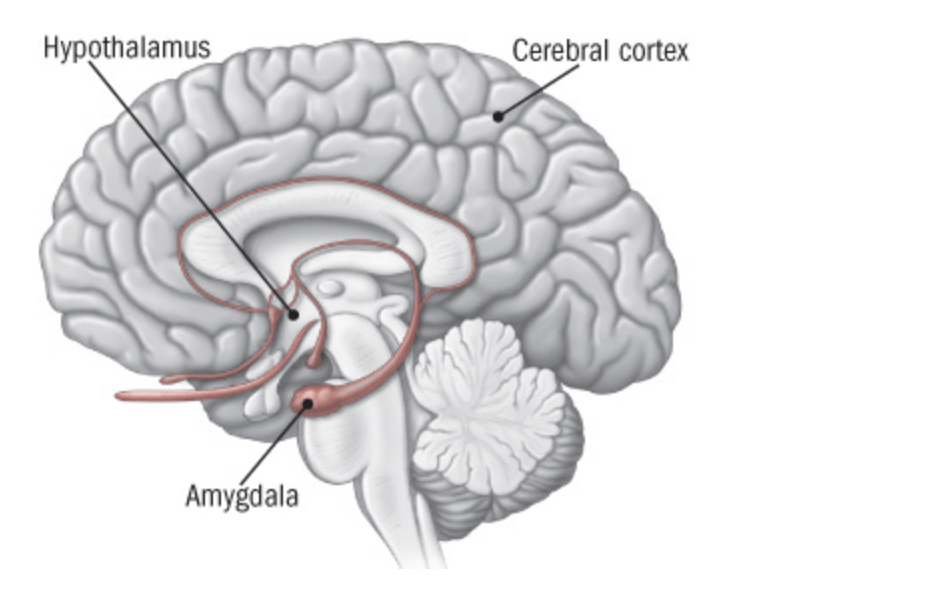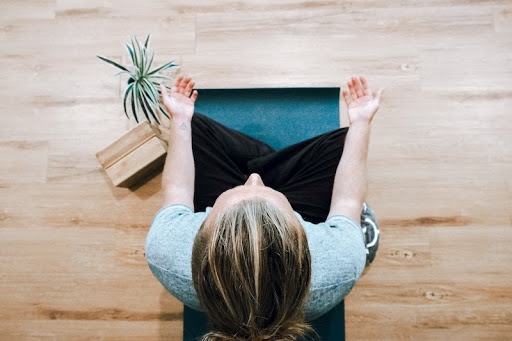Breaking out of the cycle of anxiety
Sudden heaviness in the chest, an unsettled feeling you can’t place, your heart beating over time and you feel frozen in the moment. Hands start to clam up, your gut feels funny and breathing becomes short and shallow.
For over 280 million people around the world suffering from an anxiety related disorder, this is often a reality. Triggered by a sound, a photograph, a smell, a memory – the options that revert our bodies back to the ancient fight or flight mode are endless.

What is anxiety?
Anxiety is defined by the American Psychological Association as “an emotion characterized by feelings of tension, worried thoughts and physical changes like increased blood pressure.” Normal feelings of anxiety are common given the complex situations we find ourselves in however it is important to identify the difference between regular anxiety and an anxiety disorder to seek the help we need.
Anxiety is an important emotion to keep us safe from harmful situations – since the ancient days, when our ancestors encountered a dangerous situation, e.g. a sabre-tooth tiger, an internal danger alarm has been triggered. The alarm releases a rush of the hormone adrenaline in the brain and adrenaline’s main task is to facilitate the “flight or fight response” against the impending threat.
Noticeable signs of the flight or fight response is an elevated heartbeat, sweating and increased sensitivity to surroundings. Blood is diverted away from processes such as digestion towards the muscles of the limbs to allow the body to flee the situation if needed.
The limbic system
The limbic system is a group of brain structures (i.e. hippocampus, amygdala, hypothalamus) that work to elicit our behavioral and emotional responses, in particular those we’ve required for survival from ancient times (i.e. eating, sleeping, taking care of our young, staying alive).

When our eyes see danger, they send information to the amygdala which is responsible for emotional processing. The amygdala processes the information and if there is perceived danger, it sends a signal to the hypothalamus (or the command centre). The hypothalamus communicates with the rest of the body by releasing hormones that affect the autonomic nervous system. It can either push gas to the pedal via the sympathetic branch of the autonomic nervous system OR it can press the brakes via the parasympathetic branch. When sensing danger, its gas to the pedal via release of adrenaline (hormone) to trigger the flight or fight response to give the body enough energy to flee the danger.
All this feels like: increased heart rate, more blood to muscles, heart and other vital organs, higher blood pressure, quicker breaths to allow more oxygen uptake, senses become sharper. And all this can happen in a second which is why before you’ve even truly clocked onto the car that’s coming at you, you’ve already jumped out of its way.
When does it become a problem?
So whilst the limbic system controlled flight or fight response may no longer be required to flee from predators, sustained exposure to modern day stressors like traffic jams, work pressure or family issues could cause the stress response to overfire and result in an anxiety disorder.
As a result, some people become stuck in a cycle of stress which they are unable to break leading to chronic stress. Chronic stress or anxiety results in elevated levels of certain hormones that can harm the body in the long run.
5 tips to break the cycle
As the limbic system reflex is so quick that we suddenly feel all the reactions in our bodies before we even know what’s happened, it’s important to rely on the basics to activate the parasympathetic nervous system (“PNS” or the brakes) which literally calms your body. The focus is on activating the vagus nerve (one of the main nerves of the body and part of the PNS) which has an effect on the breath, heart rate and digestive system and vice versa.
Here are five tips that are known to help calm the brain during episodes of anxiety:

1. Take deep breaths
Given the shallow breathing that’s associated with anxiety, taking the time to focus on taking deep breaths allows the body to stop the sympathetic nervous system in its tracks. This pause two fold benefits: 1) deep breathing stimulates the vagus nerve and 2) focussing on the breath allows the mind to hone in on a repetitive soothing pattern.
Close your eyes if possible. Inhale for a count of 3, opening up your rib cage as the air flows in (like its a balloon), hold the breath for a count of 3 and slowly exhale through the nose for a count of 3.
Can be done anywhere you feel anxiety is being triggered: in the car, in the middle of a meeting or whilst shopping.
2. Hum or sing to yourself (or to others!)
As the vagus nerve is connected to your larynx (or vocal chords) and the muscles of your throat, the gentle vibrations associated with humming activates these muscles and stimulates the nerve. Humming also forces you to control your breath and we know how much this helps!
3. Exercise
Physical activity is important for a myriad of reasons and helping you break the stress cycle is just one of the many. Exercise releases our happy hormones, or endorphins which counteract the effect of elevated adrenaline in the body. Physically moving the body allows for the dissipation of the built up tension in the muscles but also forces the body to breath deeply.
4. Journal
Making your mind stop and take notice of the present helps it re-evaluate the threat level (and often realise, there’s nothing around to truly trigger this response). However, if there is something that is triggering the response, journaling also helps provide perspective to yourself.
Take a note pad, a piece of paper or even your phone and write out everything you are feeling and thinking. Continue till you have written it all out. The act of writing takes our thoughts out of our mind and acts as a form of release.
5. Speak to someone
Counsellors and psychologists are trained to help us decipher our thoughts, patterns and behaviours in a way that’s not possible alone. They provide perspective, ask questions and customise activities to help us break out of cycles that are causing us harm.
With oDoc you can speak to a certified counsellor, psychologist or mental health professional from the safety and privacy of your own home via our app.
2020 has been a year that has thrown most of our plans in the year, created numerous situations that could trigger anxiety and as such, what you feel is perfectly okay. You are, after all, human. Having to continue to suffer under the hand of an invisible threat is not the best way to live your life. Take hold of these ideas, speak to a professional and take control of your mind, body and your life! We are rooting for you!
Sources
The Limbic System, Queensland Brain Institute
Understanding the Stress Response, Harvard Health Publishing
Calming Your Brain During Conflict, Harvard Business Review
This Might be the Simplest Scientific Way to Get Rid of Stress You’ve Ever Heard Of, Inc Publishing
